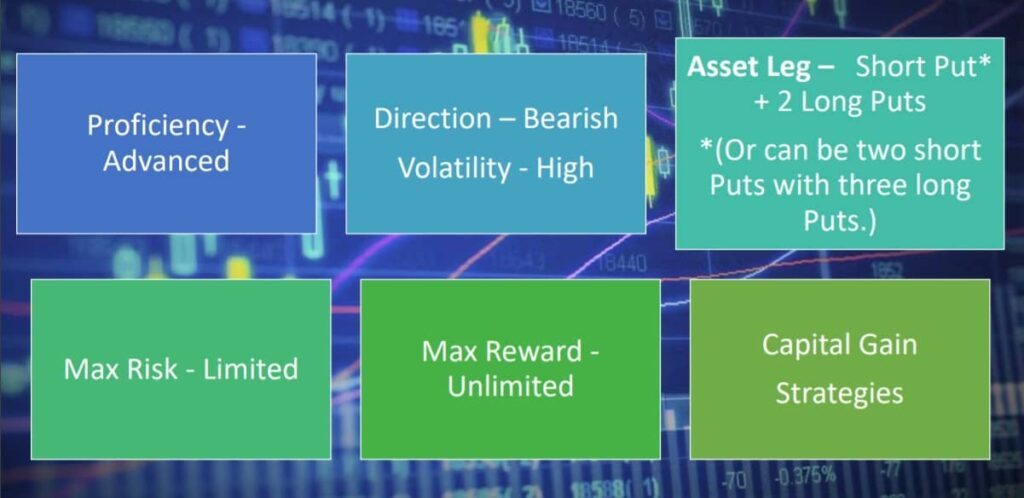
Menu



Steps In
Steps Out
Outlook
Rationale
Net Position
Effect of Time Decay
Time Period to Trade
Breakeven Down = [Lower strike price – (difference in strike prices * number of short puts) / (number of long puts – number of short puts) + [net credit received] or – [net debit paid]]
Breakeven Up = [Higher strike less net credit]
Exiting the Position
Mitigating a Loss
Advantages
Disadvantages
Share this Content
© 2021 All rights reserved
Ask Your Query